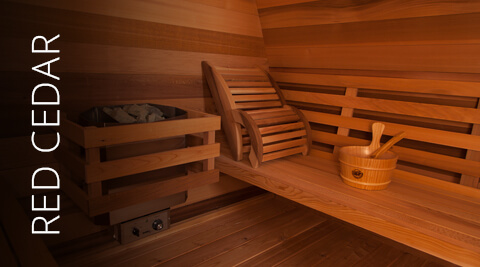Traditional Sauna Fundamentals Explained
Traditional Sauna Fundamentals Explained
Blog Article
Some Ideas on Traditional Sauna You Need To Know
Table of ContentsThe Single Strategy To Use For Traditional Sauna9 Easy Facts About Traditional Sauna Explained4 Easy Facts About Traditional Sauna DescribedGetting My Traditional Sauna To WorkAbout Traditional Sauna
The majority of the weight lost in a sauna is water loss and is re-gained upon rehydrating. Without a question sauna can be an essential part of a healthy and balanced weight loss program. To check out the distinctions between conventional and IR saunas, I will certainly divide these into verifiable, theoretical, and fabricated distinctions.Therefore, the hottest point in the saunawhich is at the ceiling straight above the sauna heateris normally between 185 and 190 F. Claims that a standard sauna surpasses 200 F is just not real and not relevant for electrical saunas sold in the United States. The temperature for a far-infrared sauna is generally set between 120 and 140 F; nevertheless, unlike the typical sauna, the goal in and IR area is not to accomplish a high temperature.
Due to this, the temperature level difference is nearly unimportant, given that extreme sweating results in both sauna kinds, yet the technique of warming the body is various. In an IR sauna the bather will really feel hot and will sweat profusely, but at much reduced temperatures (Traditional Sauna). Therefore, if the objective is to spend longer amount of times in the sauna, the IR sauna is an excellent option
When a conventional sauna has been correctly heated up, the sauna wall surfaces are warm, the air temperature has accomplished established temperature level and the rocks are super heated. As an intriguing side note, the heated walls and the rocks are sending out far-infrared warmth, incorporated with the warmed air, to develop an "enveloping heat".
Some Known Details About Traditional Sauna

When the heat is attained, the components cycle on and off to preserve the heat. The majority of traditional sauna customers appreciate putting water over the rocks to produce steam to elevate sauna moisture levels. The benefits of putting water over the rocks consist of: making the area a lot more comfortable, moistening the nasal flows, and enabling the usage of aromatherapy by blending crucial oils with the water.

When the power gets in the body, it creates the body temperature to raise and ultimately causes perspiration. In an infrared sauna it is essential for the emitters/heaters to stay on almost frequently. Because there is no mass of rocks to preserve warm, the sauna will certainly cool if the emitters closed off.
As mentioned above, the sauna bather in an infrared room intends to place himself in front of operating emitters to obtain maximum take advantage of the warmth. The home heating home time for the two spaces can be really various, depending on exactly how the areas are used. For a standard sauna, a bather ought to permit 30-40 mins for the room to accomplish a wanted temperature level and to appropriately pre-heat the rocks.
The Ultimate Guide To Traditional Sauna
A well created sauna will typically attain a temperature level of 150-160 F in concerning 30-40 mins. For hotter temperature levels, link the space may need to warm for a longer period.

Typical saunas have a tendency to be bigger (thus make use of more electricity) than infrared saunas, although standard saunas are certainly offered in one and two person sizes. For a two-person traditional sauna, 5x6 or 5x7 dimension is most preferred. The top bench can pleasantly seat two or 3 people and is likewise enough time to rest throughout the sauna session.
The 7-Second Trick For Traditional Sauna
The typical price per kWH of electricity in the U.S. is roughly $0.11, so a 4.5 kW heating unit will certainly set you back about $.50 to run for one hour, if the heating unit runs continuously for one hour. Normally a sauna heating system will certainly compete 75% of the initial hour and 50% of subsequent hours on considering that the aspects cycle once the set temperature is attained.

There is a seldom reviewed distinction in the social experience between the 2 spaces. While our society has actually shed a few of the social benefit of the typical sauna experience, it can be extremely socially gratifying (Traditional Sauna). From family time in the sauna, to heart-felt discussions with loved ones, to sauna partiesthe standard sauna experience can lead to intimate mingling
The Single Strategy To Use For Traditional Sauna
Most higher end infrared areas consist of colored light therapy, sound systems and full-glass fronts.
Report this page